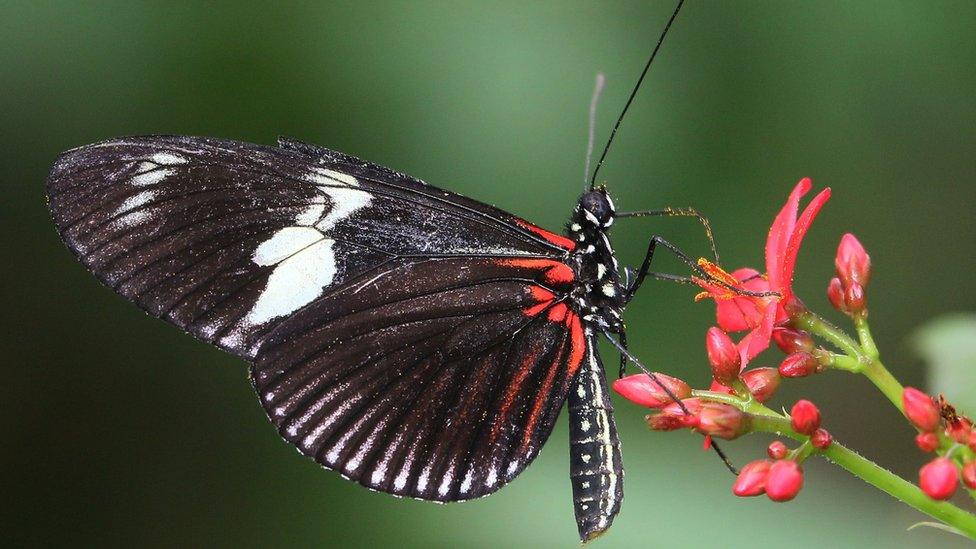Butterflies have good memories when it comes to food, study finds
- Published
- comments

Doris Longwing (Heliconius doris)
Have you ever remembered a bag of crisps in your bag you thought you'd eaten?
Now scientists have discovered butterflies and moths can remember where their food is too!
Researchers at the University of Bristol say these insects use 'spatial learning' - which means they remember where certain things are in a large area.
A tool which is very helpful when it comes to finding reliable pollen - their food source.
Zebra Longwing butterfly or Heliconius charithonia. Scientists have known about spatial learning in insects, but mostly in ant and bee species living in colonies
How do butterflies remember where their food is?
The team used Heliconius butterflies in three different sized areas for the experiment - first starting small and continuing to get bigger as the insects proved their ability to 'remember'.
The first area started with 16 artificial flowers and one real one.
This was to see if the butterflies could learn the location of the real food, and they could!
Increasingly complex butterfly mazes were used to assess the insects' spatial learning.
The next two stages involved more and more complex mazes for the butterflies to negotiate to find their foods.
In these mazes too, the butterflies passed with flying colours, locating and 'remembering' where they were and how to reach them.
The results, published in Current Biology, also found the butterflies 'remembered' the routes for days!
"We are thrilled to find out that these amazing insects can memorise the spatial location of food sources. We are just beginning to get a glimpse of the kinds of information they gather about their surroundings," said Prof Marcio Cardoso, co-supervisor, of Universidade Federal do Rio de Janeiro.
This behaviour is similar to that already observed in bumblebees.
